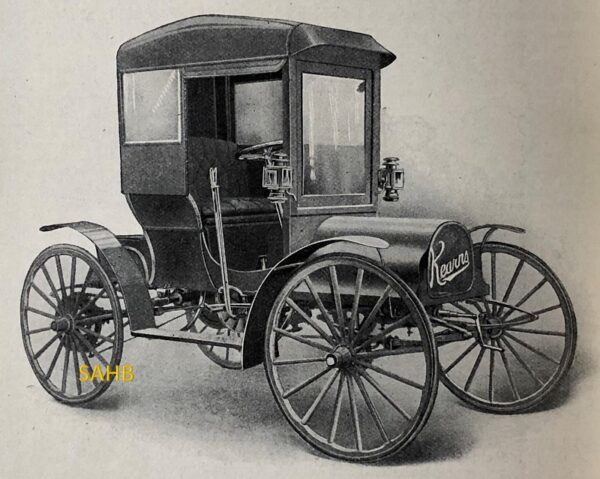
This Kearns model started life as a Eureka – a motor car name that was so popular that this example is number six of eight entries in Georgano. The Eureka Motor Buggy Company of Beavertown, Pennsylvania produced this highwheeler from 1907 to 1909, with air-cooled two-stroke Speedwell engines: a 12/14hp twin or a 15/18hp three-cylinder. Unusually for this type of car the engine was in front under a bonnet instead of under the seat. In 1908 the company was bought by local businessman Maxwell Kearns, who reorganised it as the Kearns Motor Buggy Company. By 1909 all Eurekas were renamed Kearns.
This Snapshot dates from March 1909. The article concentrated on the body of this model, called a doctor’s special storm car and known as the “Storm Queen”.
The advantages were clearly explained: “This model insures immediate protection from rain, snow, wind and mud. There is no waiting, no delay, no getting out of car to put on side curtains, no adjusting of storm apron, storm curtain or storm front. Three simple movements, which can be made with one hand, close the top, providing perfect protection without leaving the seat. In summer, or when the weather is nice, three one hand movements open the sides and front, thus admitting the sunshine and breeze. The Storm Queen body is fitted on any of the chassis, either 2, 3 or 4 cylinders.” It is a measure of the inconvenience of early motor cars that the undoubted superiority of the Storm Queen over the norm should be so confidently publicised.
The four-cylinder engine mentioned was perhaps only an idea in 1909; other sources state that a 32hp four-cylinder was only made in 1912. Kearns passenger cars were built in Beavertown from 1909 to 1916, but the company name was changed to Kearns Motor Truck Company in 1911, and from 1916, when the market for a light buggy-type car practically disappeared in the USA, the company made only commercial vehicles. Production moved to Danville, PA in 1920 and was again renamed, this time to the Kearns-Dughie Motor Company. Trucks and fire engines were made there until the company closed in 1928.
Picture courtesy of the Richard Roberts Archive







Leave a Comment